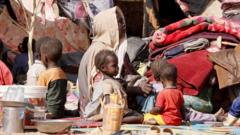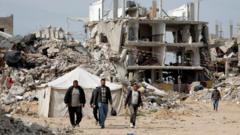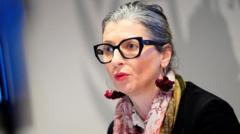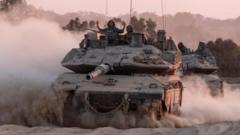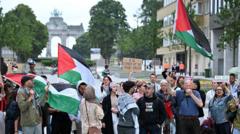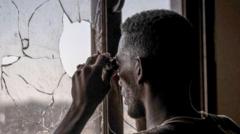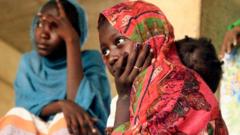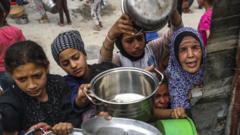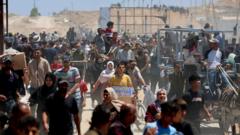The Srebrenica massacre, resulting in the deaths of over 8,000 men and boys, shapes ongoing divisions in Bosnia, with significant implications for the future.
'Thirty Years After Srebrenica: A Nation Divided by Grief and Denial'
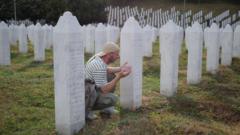
'Thirty Years After Srebrenica: A Nation Divided by Grief and Denial'
Tensions persist in Bosnia and Herzegovina, as reminders of the Srebrenica massacre continue to plague the nation three decades later.
In July 1995, the horror of the Srebrenica massacre produced echoes that continue resonating through Bosnia and Herzegovina more than thirty years later. At a recent performance of the play "Flowers of Srebrenica" at Sarajevo's War Theatre, audiences were transported back to the heart-wrenching moments when the violence unfolded, adapting the narrative of loss and the fragmented reality many families endure as they seek closure.
This tragic event, marked by the systematic execution of predominantly male Bosniaks by Bosnian-Serb forces, stands as the most recognized war crime in Europe since World War II. The UN's failure to protect the civilians who sought refuge in Srebrenica deepened the tragedy, as Dutch peacekeepers were unable to intervene effectively while General Ratko Mladić executed a calculated attack, orchestrating the massacre of around 8,000 innocent souls.
In a painful irony, victims' belongings are often the only remnants that connect the living to their loved ones, much like the poignant reminders displayed in the theater pieces performed in Sarajevo. While many families have utilized advances in DNA technology to identify and gently lay their loved ones to rest at the Potočari Cemetery, the quest for closure remains fraught: bodies unceremoniously hidden in mass graves have been disinterred and reburied, scattering remains across multiple sites.
Contemporary Bosnian society remains fragmented, reflecting the deep-cut divisions etched into its landscape since the horrendous events of the passt. The Dayton Peace Agreement that ended the conflict introduced a political structure rooted in ethnic identities, which led to the formation of Republika Srpska dominated by Serbs and the Federation where Bosniaks and Croats reside. This complex backdrop is only further complicated by politicians like Milorad Dodik, who take advantage of historical wounds to solidify their power, pushing legislative measures that threaten national stability.
Calls for unity and reconciliation echo within the hearts of many who wish to honor Srebrenica's memory. However, some leaders from Republika Srpska assert that the focus on the massacre serves only to widen the fissures between different ethnic groups. Saša Košarac's assertions aim to bring attention to suffering experienced on all sides, but they also generate tension, as acknowledging one narrative can often brush aside another's collective pain.
With public commemorations in Sarajevo contrasting starkly with the attitudes in Republika Srpska, where historical grievances linger unaddressed, the future of Bosnia remains uncertain. Personal accounts from individuals like Mirela Osmanović, who lost family members during the war, illuminate the persistent fears and frustrations felt by those who hope for a more harmonious future. As the specter of past traumas continues to shape relationships and societal structures, the struggle for acknowledgment, accountability, and reconciliation will undoubtedly dictate Bosnia's trajectory in the years to come.
This tragic event, marked by the systematic execution of predominantly male Bosniaks by Bosnian-Serb forces, stands as the most recognized war crime in Europe since World War II. The UN's failure to protect the civilians who sought refuge in Srebrenica deepened the tragedy, as Dutch peacekeepers were unable to intervene effectively while General Ratko Mladić executed a calculated attack, orchestrating the massacre of around 8,000 innocent souls.
In a painful irony, victims' belongings are often the only remnants that connect the living to their loved ones, much like the poignant reminders displayed in the theater pieces performed in Sarajevo. While many families have utilized advances in DNA technology to identify and gently lay their loved ones to rest at the Potočari Cemetery, the quest for closure remains fraught: bodies unceremoniously hidden in mass graves have been disinterred and reburied, scattering remains across multiple sites.
Contemporary Bosnian society remains fragmented, reflecting the deep-cut divisions etched into its landscape since the horrendous events of the passt. The Dayton Peace Agreement that ended the conflict introduced a political structure rooted in ethnic identities, which led to the formation of Republika Srpska dominated by Serbs and the Federation where Bosniaks and Croats reside. This complex backdrop is only further complicated by politicians like Milorad Dodik, who take advantage of historical wounds to solidify their power, pushing legislative measures that threaten national stability.
Calls for unity and reconciliation echo within the hearts of many who wish to honor Srebrenica's memory. However, some leaders from Republika Srpska assert that the focus on the massacre serves only to widen the fissures between different ethnic groups. Saša Košarac's assertions aim to bring attention to suffering experienced on all sides, but they also generate tension, as acknowledging one narrative can often brush aside another's collective pain.
With public commemorations in Sarajevo contrasting starkly with the attitudes in Republika Srpska, where historical grievances linger unaddressed, the future of Bosnia remains uncertain. Personal accounts from individuals like Mirela Osmanović, who lost family members during the war, illuminate the persistent fears and frustrations felt by those who hope for a more harmonious future. As the specter of past traumas continues to shape relationships and societal structures, the struggle for acknowledgment, accountability, and reconciliation will undoubtedly dictate Bosnia's trajectory in the years to come.



